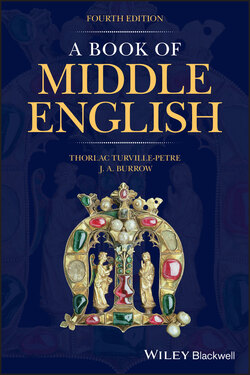Читать книгу A Book of Middle English - J. A. Burrow - Страница 26
4 Inflexions 4.1 Introduction 4.1.1 The Inflexional System
ОглавлениеThe inflexions of a word are its changes in form to express grammatical function and meaning. Some classes of word have preserved their system of inflexion better than others in Modern English; verbs, for example, distinguish tense, past from present, and third person (e.g. ‘goes’) from other persons; nouns distinguish number, singular from plural. The inflexional system to distinguish case has for the most part been greatly simplified. In Modern English, distinct case‐forms survive best in personal pronouns: e.g. he, his, him; where he is the subject (‘nominative’) form, his the possessive (‘genitive’) form, and him the object form, used for the direct object of verbs, the object of prepositions (as in ‘with him’), and the indirect object of verbs (as in ‘I gave him the book’). Old and Early Middle English pronouns commonly distinguish two object forms: the ‘accusative’ for the direct object of verbs (as in hine bilæfde, ‘left him’, 3/3); the ‘dative’ for the indirect object (as in him is loþ, ‘is hateful to him’, 2/194), and for the object of many prepositions. The distinction between accusative and dative forms is generally lost early in the Middle English period so that a single object case remains, as in Modern English.
